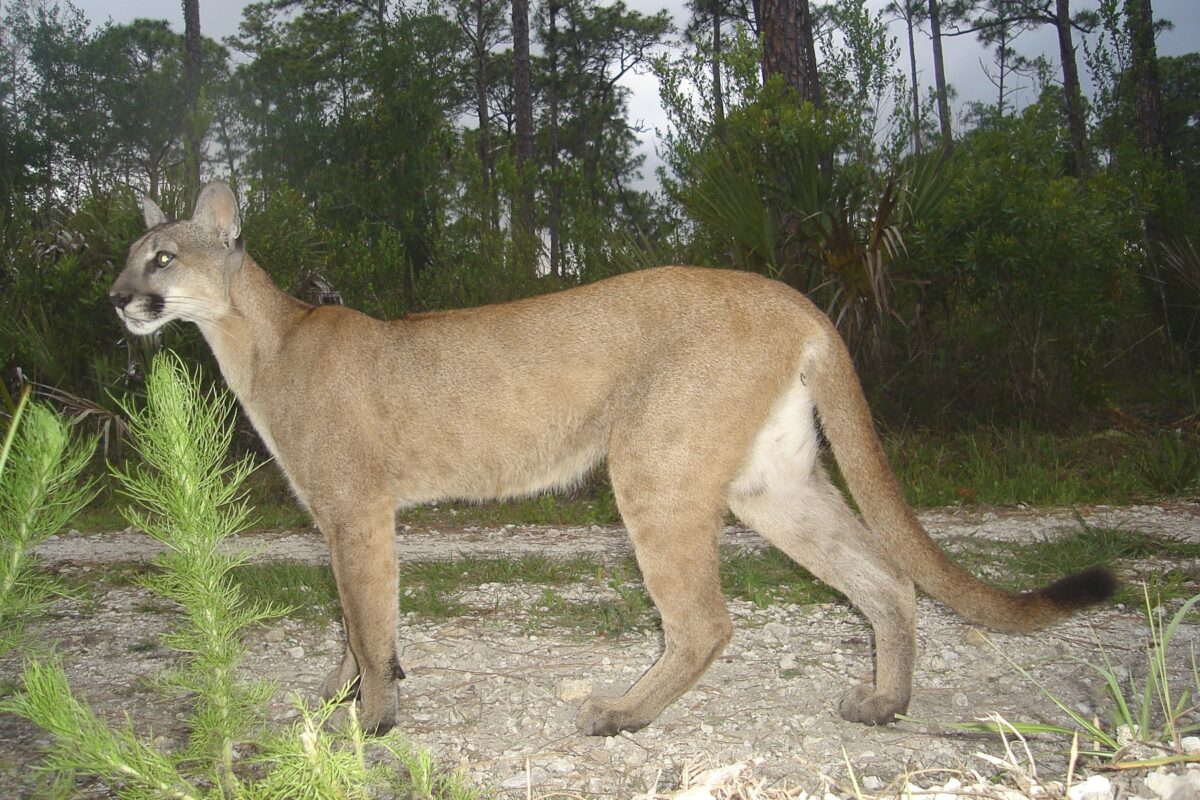By Gowan Batist, Coexistence Programs Manager
In 1980, near Cannich, Scotland, a farmer caught a mountain lion — a North American Puma concolor — in a wildlife cage trap that was baited with mutton.
Sightings of a huge tawny cat in the area dated back to the mid-70s, but the puma, once caught, was revealed to be both familiar with humans and rather plump. In fact, she was obese and very tame and was likely someone’s former pet. Her tameness and fussy nature (she would not eat unprepared meat) led many to conclude that she wasn’t the culprit behind repeated livestock killings in the area.
The Scots named the mountain lion Felicity and moved her to Highland Wildlife Park, where she lived out her days before dying at an extremely old age.
The discovery of Felicity, and the realization that she was not killing the Cannich ranchers’ livestock, convinced the community that there must be more lions on the moors. To this day, Scottish tabloids are full of mountain lion sightings, often accompanied by photographic “evidence” of a domestic house cat that looks strangely out of scale. (We get those pictures and home video camera footage here in America too.)
Scotland is now an ecosystem without apex carnivores. The country’s last big cat, the lynx, went extinct during the Medieval period. But there seems to be a longing for the return of a large, majestic cat on the landscape welling up in the public consciousness.
On the other hand, in other parts of the world, like Africa and eastern Europe, farmers and ranchers have lived alongside big cats for Millenia, including tigers, African lions, leopards and cheetahs (in addition to wild dogs and hyenas).
By comparison, mainstream ranching culture in the Unites States is still very young, and still very mired with colonialist sensibilities about wildlife. When the British colonized Ireland, Scotland and Wales, they systematically killed wolves, bear and lynx. The same pattern repeated in the Americas. Beyond western Europe, however, there are deep cultural memories about how to successfully coexist.
Eastern European pastoralism, especially night penning and livestock guardian dog training, is a constant source of inspiration in my work as a sheep rancher in northern California, and some of the best global experts in my research are in African countries like Botswana and Namibia. Fortunately, international coexistence tools to keep livestock and mountain lions safe are beginning to enter the conversation for American ranchers.
High night pens, called Boma or Krals depending on the country, keep livestock safe at night. Ranchers are adapting their programs to implement livestock guardian dogs and innovative wildlife friendly fences that allow small animals to pass through. To highlight some of this important work, the Mountain Lion Foundation recently hosted a webinar exploring the successes and challenges of protecting one of the mountain lion’s closest cousins, the cheetah.
Next month (October 2024), the 2024 International Wildlife Coexistence Conference will take place in Turin, Italy, featuring speakers from all around the world sharing their wisdom, challenges and innovations. I was honored to have a small role in the planning efforts for this conference, and I’ll be attending virtually. I’m especially excited to bring fresh insights and emerging research back to ranchers and farmers here in North America to keep more cougars safe and thriving in the wild.



 Facebook
Facebook Twitter
Twitter Send Email
Send Email


